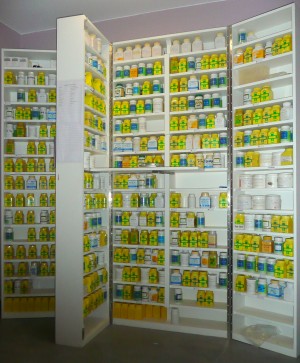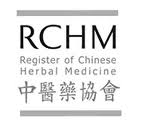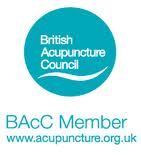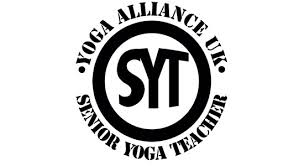Posts By: richard
30th – 31st July 2016 – Yantra Yoga for Beginners in Las Palmas de Gran Canaria

30th – 31st July 2016
Yantra Yoga for Beginners in Las Palmas de Gran Canaria
Price: 80 Euros
Times: 10:00am – 5:00pm each day
Enquiries: Click Here
Mindful Movement to Music Classes
Mindful Movement to music: A monthly event which invites you to experience the whole dimension of your body energy and mind. This workshop is based on many years of experience with some of the key components that are being applied.
Each 2 hour workshop will be themed lead and will always incorporate several key components for safety consisting of:
- Preliminary phase: Warm ups to prepare the body joints and muscles.
- Secondary phase: Where you will be invited to apply longer staying and exploring positions with small micro movements, stretching moving and opening in the movements inspired by the music.
- Third phase: You are invited to experience the result of opening and release of movement grounding and relaxation At least has experience with sensation this informal basis of mindfulness of natural accruing sensations of the body and energy, from here we then enter into stillness and relaxation.
Details about the sessions
Everyone is welcome no previous experience is required, only an openness and willingness to explore some of your limitations and your own way of moving. You will be creating your own positions and movements unique to your body, not specifically related to any specific yoga or dance tradition.
In some parts of the session you'll be invited to start from certain positions, lying on the floor, siting, standing etc. Then encouraged to move and explore from there. The floor will be covered with shiatsu mats that encourage comfortable exploration of the body and use props that enable a more dynamic interaction.
Some of the music is specially selected and remixed to a specific speed, this is to facilitate optimal functioning of the heart rate and breaths per minute. Some evenings may also have input from musicians.
Acupuncture, Chinese Medicine and Yoga Therapies in St John’s Wood
John Renshaw is a practitioner of Acupuncture, Chinese Herbal Medicine, Massage and Yoga in Central and North London, conveniently located for the areas of St John’s Wood, Hampstead, Kensal Rise, Willesden Green, West Hampstead, Camden, Swiss Cottage, Belsize Park, Maida Vale and Regents Park. Kentish Town, chalk Farm.
With more than 25 years of experience. John offers a comprehensive set of skills to treat the whole person and teaches different systems of yoga and meditation. He also offers advice about lifestyle, and nutrition, in order to help balance and relax your body energy and mind.
Body Energy and Mind
Optimising Health, Vitality and Well Being
John has been combining various systems of healing and healthcare for more than 25 years and treats many different conditions. TCM treatment encompasses Acupuncture, Chinese Herbal Medicine, Moxibustion, Cupping, Tuina and Shiatsu Massage, and other techniques such as Auricular Acupuncture. John also practices the Rossiter method deep connective tissue stretching for pain management. All of these natural healing methods aim to promote a balanced natural flow of energy within the body, alleviate discomfort and pain, encourage health vitality and calm the mind.
Yoga Classes and Courses
As well as being a skilled therapist, John has also been a professional Yoga teacher for more than 25 years. He is particularly expert in the system of Tibetan yoga called Yantra Yoga. He also practices Yoga Therapy on a one to one basis with his clients. Read More…
Using Yoga to down regulate the Fight or Flight response
Practicing Yoga makes us feel great. Our mind is clear, our breath is complete and our muscles are toned and flexible. One of the main reasons people all over the world practice yoga is to relieve stress and tention, but where does all that stress stem from? How did we get to this point where we feel under pressure and full of tension? Why does yoga remove this stress, or better yet how does it work? It stems from the saying “we are in fight or flight mode”.
The fight or flight mechanism is our inborn, it is a very primitive reaction to stressful situations, whether it be internal or external circumstance’s that bring it on. When we feel threatened by anything our nerve cells fire and chemicals such as adrenaline and cortisol (stress hormones) release into our system making our rational mind take the back seat and putting us into an extremely stressful and taxing experience where we either want to run or fight our way out. What happens is our eyes dilate, our digestion shuts off and our ability to rationalize situations and perceive the world with clarity is deeply curbed. Most people in the world are living in a form of “fight or flight” which has been linked to chronic disease and burn out. We often seek yoga classes to help with our stress relief. In fact it’s the most common thing people tell me when they come to my yoga class. Here is how to shut of the “fight or flight” response in you yoga practice and daily life.
THE SIMPLE WAY
Lie down with your ankles crossed and your wrist crossed let the palms of your hands touch.
Whenever you cross the right and left side of your body and get the nerve endings of your palms to touch it shuts off the “fight or flight” mechanism in your body. Close the eyes and place the tip of your tongue to the roof of your mouth, which additionally calms the central nervous system. Breathe through your nose deep and slow. When you breath through your nose you are tapping into the olfactory gland and the base of your nasal passage and when oxygen hits that gland it tells your body to calm and surrender.
Do this for 5 minutes or as much as you like.
EAGLE POSE GARUDASANA
Start in chair pose cross your right knee over the left knee and try hooking your right foot behind the left ankle (if you cant hook the foot no problem) reach your arms forward taking your left elbow under your right elbow and intertwine your arms and get the palms of your hands to touch. Breath evenly for 5 breaths then switch sides.
These are just a few tips and examples of how yoga changes our body and perception of the world from being stressed to being receptive.
Yoga Classes
30th – 31st July 2016, 10:00am – 5:00pm
Yantra Yoga for Beginners in Las Palmas de Gran Canaria
Price: 80 Euros
Enquiries: Click Here
Yoga Classes and Courses
Classes may vary from very basic beginner level to more dynamic and advanced levels, but always a key point in mind is the unique constitution and present state of each individual and how yoga can be modified to suit your ability, condition and capacity.
Different styles of yoga are used drawing from a broad range of yogic and bodywork traditions depending on the focus of the course,
Hatha yoga, restorative yoga, yin yoga, structural yoga, yantra yoga and yoga therapy.
Applying some or all of the following methods:
- Mobilizing and preparing the joints
- Strengthening & Grounding Poses
- Movement and Balancing Poses
- Stretching and Invigorating Poses
- Core Work and Activating Poses
- Stretching and Invigorating Poses
- Restorative & Relaxation-promoting Poses
- Pranayama breathing practices
- Meditation and contemplation
Call john on 07939090412 to talk about how yoga could help you and book a session.
Acupuncture &TCM
Acupuncture and TCM
Acupuncture is one of the major branches of traditional Chinese medicine (TCM). Traditional Chinese medicine has mapped more than 2,000 acupuncture points on the human body, which connect with 12 main and 8 secondary pathways called meridians. These meridians conduct energy, or Qi flow between the surface of the body and the related internal organs.
The main meridians are classified into two opposing categories: Yin meridians and Yang meridians. Yin meridians link to the Yin organs (usually solid organs), and Yang meridians to the Yang organs (usually hollow organs). Yin and Yang meridians form a complex network, guiding and regulating a proper Qi flow through the whole body.
A healthy individual means that Qi circulates freely in the meridian networks, and promotes and maintains the Yin and Yang balance and the organ harmony.
Diseases occur when the meridians are blocked and Qi flow is disturbed or diminished. The diseased conditions are expected to be restored by manipulating the involved meridians, using acupuncture and other healing methods such as acupressure massage Qi gong, moxibustion and cupping Etc.
One of the unique functions of acu-points is bi-directional regulation, which means that stimulating a same point can restore two distinctive opposite diseased conditions (excess and deficient )over-function and under-function of the affected organs.
Acupuncture points are stimulated with fine sterile disposable needles to trigger a healing response in the patient. Specific points along the acupuncture channels are chosen according to traditional theory and anatomical findings to rebalance the flow of Qi in the channels and bring about healing.
Acupuncture treatment aims to treat the root of a condition, whilst also relieving the symptoms,
It does this by restoring natural functioning of the body at the deepest levels. As well as balancing and helping with specific problems it can also help with stress and promote general wellbeing and calm.
Cupping therapy
Cupping therapy is developed to a high level in Chinese medicine, but which also exists independently in many other traditional medicine systems.
A partial vacuum is introduced into the cup, normally by using a flame, then the cup is quickly placed onto the body. The vacuum pulls the muscle and tissue up into the cup, aiding local circulation and loosening tightness and restrictions. There are also cups which use a pump and a valve to achieve the same effect.
In Chinese medicine cupping can be used to 'expel' pathogens from the skin and muscle layer, this means in treating symptoms including mild fever, chills and fever, stiff neck and a little sweating. It also means it is indicated for situations where there is pain and localized blood stagnation. The suction moves or invigorates the blood, that is in situations where there is sharp or severe muscle pain, spasm and loss of movement where there is qi and blood stasis. By restoring the circulation of blood, stasis is removed and function returns.
Chinese Herbal Medicine
Chinese herbal medicine is part of an integrated system of Traditional Chinese Medicine (TCM) that has an uninterrupted history of development dating back thousands of years in China and other parts of East Asia. The origins of Chinese herbal medicine can be traced back a few thousand years which makes it one of the oldest health care modality to-date.
In general, Chinese herbal medicine takes an wholistic approach to understanding normal function and disease processes and focuses as much on the prevention of illness as on the treatment. Most diseases or illnesses present with a core set of recognisable signs and symptoms, but the actual presentation of a particular disease or illness will vary from person to person. For this reason, people with similar health conditions may be provided with quite different Chinese herbal medicine prescriptions.

Today, there are around 500 substances commonly used in Chinese herbal medicine, most of Chinese herbal medicine used are originated from plants.
Some Chinese herbal medicine are familiar to all of us, for example ,liquorice, ginger, garlic, rhubarb, cinnamon, and chrysanthemum, peony flowers that might be in the backyard gardens.
Concentrated extracts are mostly used which have been processed pharmaceutically to GMP (Good Manufacturing Process) standard which ensures potency, quality and keeps the product free from pesticides and other contaminants. These powders are taken by mixing a fixed measure with warm water, thus ensuring a safe dose is maintained. Also, it saves time from the traditional boiling of the raw herbs which usually takes the patient about an hour per bag.
If you are very sensitive to taste,the formula can be encapsulated which would be more palatable.
All the herbs used are regulated by The Register of Chinese Herbal Medicine which ensures that no substances are used from animals, minerals or protected plants, as set by The Medicines and Heathcare products Regulatory Agency .
What does the RCHM believe that Chinese Medicine can treat?
NB The RCHM's Code of Ethics, to which all RCHM members must adhere states
that: "Herbal practitioners must always be aware of the necessity to communicate with other healthcare professionals, directly or indirectly, when the expertise of such professionals fits more properly the needs of a particular patient."
RCHM members will therefore not discourage essential medical treatment for conditions where western medical supervision or advice should be sought. They will always advise patients, in the case of serious illnesses or uncertain diagnosis, to seek advice and treatment from their GP/consultant. RCHM members will also, with the patient's consent, liaise with that patient's other health professionals, where appropriate, when offering complementary treatment.
The RCHM believes that Chinese herbal medicine has a role to play in the treatment of the following conditions:
- Skin disease, including eczema, psoriasis, acne, rosacea, urticaria
- Gastro-intestinal disorders, including irritable bowel syndrome, chronic constipation, ulcerative colitis
- Gynaecological conditions, including pre-menstrual syndrome and dysmenorrhoea, endometriosis, infertility
- Hepatitis and HIV: some promising results have been obtained for treatment of Hepatitis C, and supportive treatment may be beneficial in the case of HIV
- Chronic fatigue syndromes, whether with a background of viral infection or in other situations
- Respiratory conditions, including asthma, bronchitis, and chronic coughs, allergic and perennial rhinitis and sinusitis
- Rheumatological conditions (e.g. osteoarthritis and rheumatoid arthritis)
- Urinary conditions including chronic cystitis
- Psychological problems (e.g. depression, anxiety)
Massage Therapy & Body Work
Body Work
John uses different systems of body work combined or used individually, for the best therapeutic outcome or as the client’s preference.
Chinese Massage
Tui Na or Chinese Massage is an ancient massage that is part of Chinese Medicine acupuncture, herbal medicine, and qigong. Tui Na is one of the oldest treatments known to man and has been used and developed by billions of people in the East for thousands of years. In China it is practiced as a medical massage for therapeutic benefits. It accelerates the regeneration and healing of injuries, improves blood and lymph circulation, detoxifies the system, alleviates pain, relaxes tight muscles, strengthens immunity and improves health and well-being.
Shiatsu
Shiatsu is an oriental massage developed mostly in Japan in which fingers, palms, elbows and knees are used to apply pressure along the Chinese acupuncture meridians. Like acupuncture, and Tui Na shiatsu aims to stimulate and balances the body’s vital energy, known Ki or Qi in Chinese. Shiatsu is given on a futon, on the floor, or on a treatment couch with the client fully clothed.
Shiatsu can help a wide range of conditions, from specific injuries to more general symptoms of ill health. It can be a deeply relaxing experience and can help prevent the build up of stress in our lives. Like acupuncture, shiatsu aims to treat the root of the problem by balancing the body's flow of energy.
Connective tissue stretching
The Rossiter System is a powerful and effective method to treat many types of pain, it has elements of structural integration, shiatsu, and Rolfing, but a major difference is that the patent does all the work, they are in control.
You lie on a floor on a mat, fully clothed. The foot is used to press and anchor your tissue in place while you move in a precise way and apply strong stretches to your body, you are in control of the session.
The root cause is usually found in the connective tissue, the stretchy and broad fascial coverings which connect each part of the body to other parts – hence it’s called the “connective tissue”. It surrounds every muscle, ligament, tendon, and organ, gives the body its shape and holds it all together.
When the connective tissue becomes, injured, stressed or overworked it shortens and thickens, This may cause you pain or stiffness and even reduce your range of motion considerably.
The Rossiter system is most helpful for people suffering from:
Arm, wrist or hand pain
Sciatic, Lower Back or Hip pain
Knee pain
Shoulder or Rotator cuff pain
Certain types of Headaches or neck pain
Tight calves or hamstrings
Tennis elbow
Plantar fasciitis
Repetitive Strain Injuries
For more information about the Rossiter system http://therossitersystem.com/our-story.htm
Yoga Therapy
John Renshaw offers a unique form of therapeutic yoga and tension release. Based on the principles of yoga, John will take you through a series of passive movements, stretches and muscular release. Ideal for those suffering from chronic tension especially of the shoulders, lower back and hips.
Yoga therapy is the specialist adaptation of yoga for those suffering with specific health problems and physical injuries. Although regular yoga sessions can improve general health, the practice does not aim to resolve serious conditions and is more focused on developing physical fitness and the maintaining overall well-being.
Yoga therapy practitioners are qualified yoga teachers but they have undertaken additional training in medicine and applications of yoga to medical conditions. This allows the practitioner to tailor the yoga to the patient’s specific ailment or injury with the ultimate aim of healing not only these specific symptoms but also to target the cause to prevent the injury from reoccurring.
What does treatment involve?
The first meeting begins by taking a detailed medical history from you as well as discussing physical, mental emotional and lifestyle issues. The more in-depth the information the better as this is what will be used to analyse your condition and subsequently form your treatment plan.
Usually, this is then followed by a series of one to one sessions, or it could be practical to form a small group of patients who require similar or the same treatment. In terms of the session itself, whether taken individually or as a group, it will primarily consist of postural, breathing practice, mindfulness and relaxation exercises. The combination of yoga postures chosen aim to strengthen the body as well as increasing flexibility and mobility. Exercises which involve breathing techniques will work therapeutically by increasing the flow of oxygen, helping to relieve stress, calm the nervous system and strengthen the respiratory and digestive systems.
Relaxation methods work on both a physical and mental level by creating a sense of wellbeing which helps us to deal with situations that would normally put strain on our bodies, and finally, meditation techniques help us to achieve a sense of inner calm and happiness.
Yoga Therapy for the Mind 8 Week Course
Specialist Yoga Therapy courses for stress anxiety and depression. For full course details Click Here




